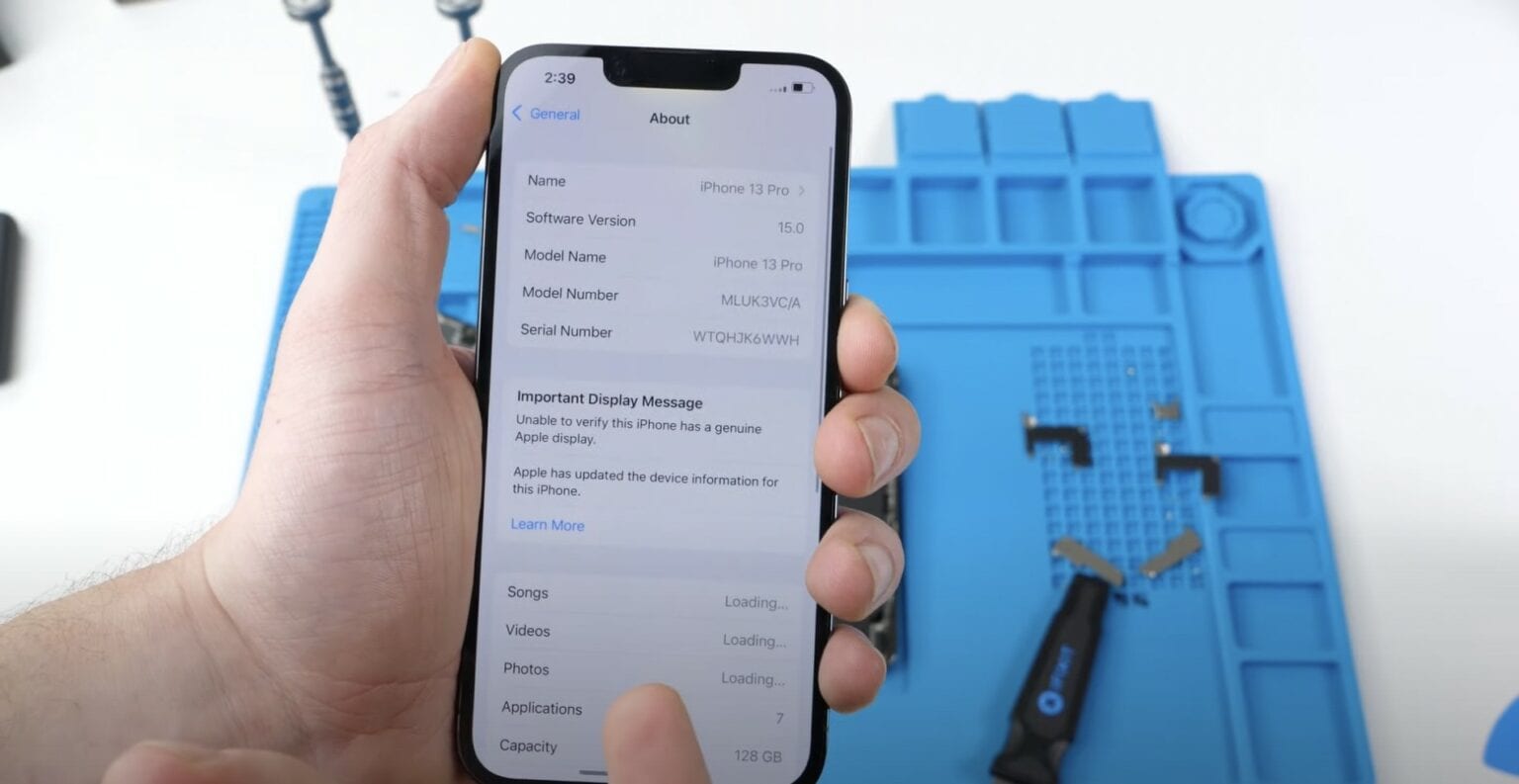If you happen to break the dazzling Super Retina XDR display packed into your iPhone 13, you might want to avoid seeking out a more affordable replacement from a third-party repairer. It seems third-party replacements kill Face ID in Apple’s newest smartphone lineup — even when genuine Apple parts are used.
“Unable to verify this iPhone has a genuine Apple display,” reads the message that greets iPhone 13 owners after their display is replaced by anyone other than Apple.
Face ID stops working after iPhone 13 display repairs
Apple has a history of locking down certain components to prevent third-party repairs. In earlier iPhone models, replacing the Home button with anyone other than Apple prevents Touch ID from working. On some models, the Settings app warns you when your device has a non-genuine display or battery.
Apple maintains that it does this for security purposes, and to prevent iPhone owners from being duped with cheaper, less reliable components. But it’s a practice that upsets a lot of customers and third-party repairers. And it doesn’t look like it’s going to stop any time soon.
A video posted to YouTube by Phone Repair Guru reveals that Face ID stops working on iPhone 13 after its display has been replaced by a third-party repairer. This happens even if genuine Apple components — like an original display from another iPhone 13 model — are used in the repair.
An “important display message” appears after the device is rebooted, which reads: “Unable to verify this iPhone has a genuine Apple display.” Putting the handset’s original display back in — or getting the device repaired by Apple — is the only way to restore Face ID and remove the warning.
Face ID isn’t part of iPhone’s screen
What makes this block particularly frustrating is that iPhone 13’s display is separate from its Face ID sensors, which are housed inside the iPhone’s chassis itself, and do not need to be removed during a display replacement.
With that being the case, it’s unclear why Apple would disable Face ID after a third-party repair if the original Face ID components are untouched. It cannot be for security reasons if the sensors themselves have not been compromised. The only explanation is that Apple simply wants to block third-party display repairs.
That’s disappointing news not only for iPhone 13 owners, who will be forced to pay Apple’s prices for display repairs — but also for third-party repair businesses, which will now miss out on some iPhone 13 repairs. Of course, some customers may still forfeit Face ID for a cheaper screen replacement.
If you break your iPhone 13 screen, then, and you want to be able to use Face ID in the future, you’ll need to get it repaired by Apple or another business under Cupertino’s Independent Repair Program, which will use genuine Apple components — and charge just as much as Apple.


